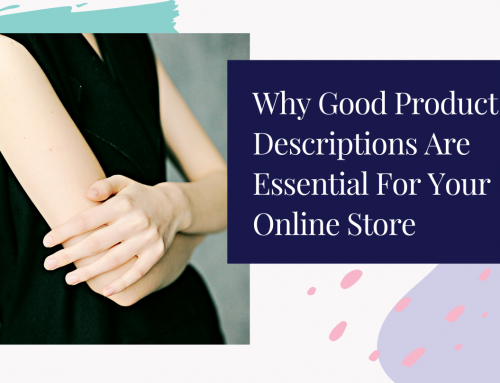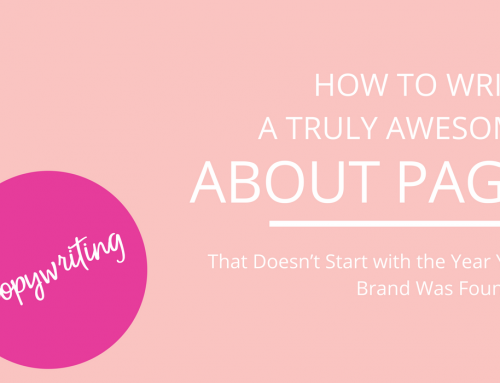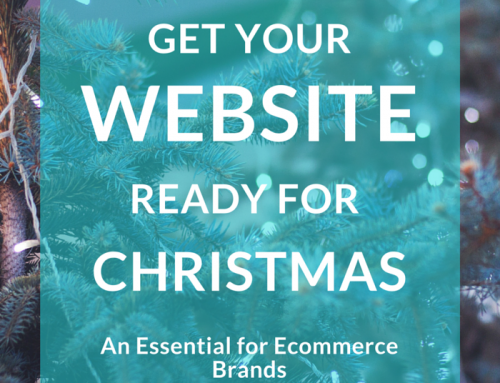Your online store is more than just a website – it’s your shopfront, customer service and community all rolled into one. With so much going on, it’s essential you get on top of the content you need and the flow between pages, otherwise your online store could be as helpful as a road map from the ’90s.
To make sure you’ve got everything you need on your online store, you first want to start with the big picture by planning your online store’s layout.
The purpose of this online store layout is to help you plan:
- What pages you need
- How visitors will go from your home page to checking out
- And where you’ll include your shipping terms and other info
This is the first thing I do when working on copy for my client’s online store. Before I write a single word, I first plan the layout and check to make sure it’s going to meet their business goals.
And the best part is you can use this process whether you’re DIY-ing on Shopify (or a similar platform) or getting a designer to help you out (in fact your designer will love you if you do this). And even if you’ve already started your online store, you can use this process to ensure you’ve got all the content you need to guide your customers to buy.
Ready to get started? Read on to create your own online store layout, plus there’s a free worksheet at the end that’s going to make this process even simpler.
Getting started with your online store layout
“Let’s start at the very beginning, a very good place to start” – Maria, The Sound of Music
As with anything related to your business, a good place to start is with your goals and purpose. Your business isn’t just a hobby, after all. You want to sell awesome things, create happy customers and make some money, right?
To help you achieve those goals, your online store needs to:
- Be easy to navigate
- Showcase your products in the best way
- Help browsers make the decision to buy
That’s a lot of boxes you’ve got to tick. So take a moment to consider the following.
What’s the main purpose of my online store?
Isn’t this obvious, I hear you ask? But while the purpose of your online store is to sell things, you might also want it to:
- Showcase your IRL locations (if you have any) or stockists
- Get people to sign up to your email list
- Build brand awareness
- Attract wholesalers
- Create a community
- Showcase your brand’s message and purpose
- Promote workshops or other aligned services
So as a first step, write down all the goals you’d like your online store to help you achieve.
Who are my customers?
The next thing you want to do is figure out who your website visitors are.
Get a picture in your mind about who they are. How old are they? Where do they live? How much shopping do they do online? What is their family status? What problems are they looking to solve? What do they do on the weekends?
What makes my online store unique?
There’s probably at least two other stores out there selling what you sell (or something similar). But that’s okay, because you offer something special. Something different.
Whether it’s your story, the way you make your products, how you package them up or the attitude you serve it all up with, you are original. So own it.
Write down everything that makes your online store different and what you want to showcase.
What do I need to tell people?
If you’re selling anything online, ultimately you want (the right) people to buy.
Brainstorm what information people might need to buy from you. The idea is to build trust and make the decision process as easy as possible. Things like:
- Size guides
- Shipping info
- Returns policies
- Information on how to use your products
- Information on how to care for your products
- Ideas on how or where to use it
And of course, really clear and obvious buy buttons. (You wouldn’t believe how often these are hidden or hard to find ?)
Creating your content plan
Once you’ve figured out what you need to include on your website, it’s time to plan out how it’ll all fit together.
I like to map this out with pen and paper – something about the physical page really helps my brain get going.
Start with the Home Page in the centre. If you want, you can also include a couple of dot points about the content that will live there – like your email sign up form, contact details and social media links.
Then it’s time to work out your other “routes”. Based on the page you filled out above, work out the route that each of your visitors may take.
Let’s go back to our personal stylist.
Someone interested in general tips on styling will likely head to your blog posts first. So let’s add that in.
If your visitor wants to book a personal stylist, they’ll likely want to find out more about you and what you offer – so they’re heading to your About page or your Services page. Or if they’ve already checked you out, they may just want to head straight to your Contact Page.
You may also have visitors after more comprehensive help than on your blog, but don’t want your personal styling services (yet). They may want your (free) ebook or sign up to a workshop.
As you map these main linkages, you can then create additional pathways based on what your visitors may want from you. This could mean a FAQs page off the Services page, or Testimonials coming off your About Page.
As you create this map, also consider what your goals are with the website. You’ll want to make sure you’re sending those potential clients and customers along a path that eventually gets them to contact or buy from you.
Remember also that your visitors may not always land on your Home page first. Maybe your Services page came up in a Google search, or they were forwarded a blog post from a friend. Think of it like taking a random ramp onto the Bolte Bridge. Do your visitors know where they are? Is it easy for them to turn around if they get lost? (Is it just me that has trouble finding the airport?).
Having your menu bar appear on each page is a good way to make sure visitors can find their way around. As is having a clear heading on each page that captures who you are and what you provide.
Writing Your Website Content
If you’ve given some thought to the above points, you’ll actually find it a heck of a lot easier to write your website content.
As you write, keep in mind your visitors, your business goals and the action you want people to take.
Also give some thought to how you can drip-feed information about your business, rather than throw it all at them straight up. Think back to your last first date. You didn’t tell your date your entire history, goals for the future and hobbies straight away, right?
Keep you pages short, and include links for those peeps that want more information. Leave them with just enough so that they’re itching to find out more.
Breaking your content down this way also helps to chunk up creating the content. When faced with a blank page, it can be hard to get started. But if you can keep in mind your visitor and the journey that you want them to take on each page, you can write directly to them and what they are looking for.
Once you’ve got the basic structure of your website, you can level up your content to have even more routes for your visitors. This might be in the form of specific landing pages for certain offers or visitors coming from a guest post or a social media post.
So there you go. This is exactly how I plan out the website content for my clients, and it’s such a great way to see how everything will link together once you’re done.
I’d love to know if this has helped you. Feel free to leave a comment below if you’d like more content like this. Oh and I’d love it if you’d share this using the buttons below.





[…] Related: How to Write Your Website With a Website Content Map […]